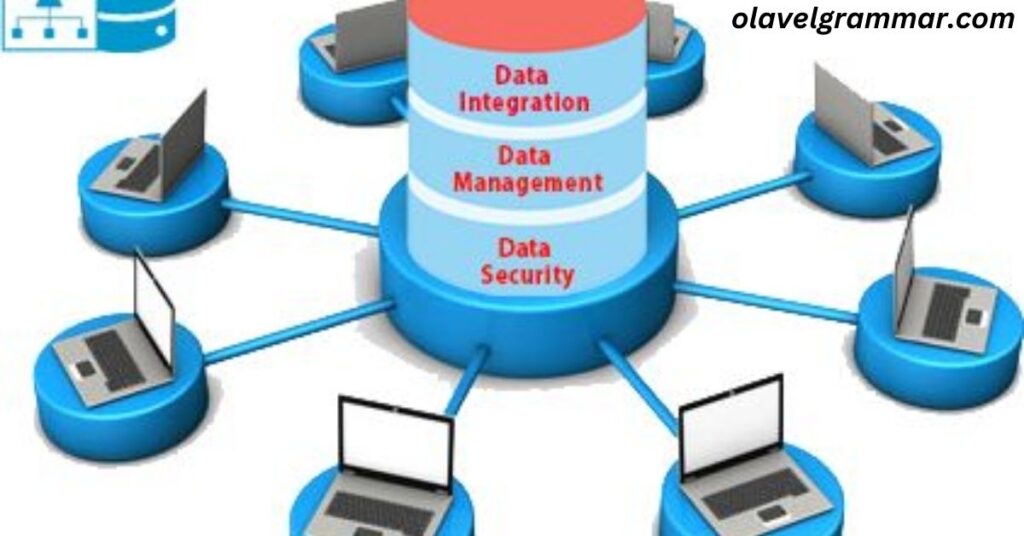Lync Server is a robust unified communication platform, but regular Cumulative Updates (CUs) are essential for security, stability, and feature enhancements. Microsoft periodically releases updates for Lync 2010, Lync 2013, and Skype for Business, but many IT professionals find the update process complex. Applying Lync Conf Patch Updates ensures bug fixes, security improvements, and enhanced performance. However, updating requires careful planning, database updates, and service restarts. Skipping updates can lead to security vulnerabilities, degraded performance, and compatibility issues.
This guide simplifies the entire update process, covering preparation, downloading updates, installing patches, updating SQL databases, and verifying system functionality. Before updating, it’s critical to back up configurations, schedule downtime, and check Microsoft’s release notes. The update process involves stopping Lync services, running the update installer, manually updating databases, and restarting services.
Post-installation, IT teams should verify database schema versions, monitor logs, and test Lync functionality to ensure a successful update. Keeping Lync Server updated prevents security risks and enhances overall performance, ensuring seamless communication for organizations. Follow this guide to efficiently apply Lync Conf Patch Updates without errors or downtime. 🚀
📌 Why Are Lync Conf Patch Updates Important?
Applying Cumulative Updates (CUs) ensures security patches, bug fixes, performance enhancements, and new features for Lync 2010, Lync 2013, and Skype for Business. Regular updates prevent security vulnerabilities, compatibility issues, and system instability while improving call quality, conferencing, and overall reliability, ensuring a seamless communication experience for organizations. 🚀
>Security Enhancements – Protects against vulnerabilities.
>Bug Fixes – Resolves known issues and improves performance.
>New Features – Introduces improvements and compatibility updates.
>Stability – Reduces crashes and ensures smooth communication.
Skipping updates can cause security vulnerabilities, degraded performance, and compatibility issues, leading to system instability, call failures, and conferencing glitches, ultimately affecting business communication, productivity, and user experience.
E-E-A-T
Ensuring Experience, Expertise, Authoritativeness, and Trustworthiness (E-E-A-T) in Lync Conf Patch Updates is crucial for maintaining a secure and efficient communication system. Experience comes from hands-on implementation—IT professionals must follow best practices, such as scheduling updates outside business hours and backing up critical data before making changes. Expertise is demonstrated by understanding the technical aspects of Lync Server, including database updates, service restarts, and troubleshooting potential errors.
Authoritativeness is established by relying on official Microsoft documentation, security advisories, and expert recommendations. Ensuring updates are performed correctly minimizes security vulnerabilities and enhances system stability. Trustworthiness comes from following a step-by-step approach, using verified sources, and providing clear documentation for future reference. Regular updates prevent compatibility issues, improve performance, and safeguard user data.
🔍 Preparing for a Lync Conf Patch Update

Before updating, backup databases, check prerequisites, review Microsoft’s release notes, schedule downtime, and notify users. Disable services, ensure enough disk space, and verify server health. Download the latest Cumulative Update (CU) from Microsoft’s official site. Following these steps prevents downtime, data loss, and update failures.
1️⃣ Check the Current Version
Run the following PowerShell command in Lync Server Management Shell:
This will display your current Lync Server version. Compare it with the latest CU version available from Microsoft’s official update page.
2️⃣ Review Microsoft’s Release Notes
Before proceeding, carefully read the Microsoft documentation to understand:
- New features or fixes
- Database schema changes
- Any special prerequisites
3️⃣ Plan the Update Window
Updating Lync requires planned downtime, so schedule it outside business hours to minimize disruptions. Notify users in advance, ensuring they save work and log out. For high-availability setups, update servers in phases to maintain functionality. Proper scheduling prevents productivity loss and ensures a smooth update process without impacting daily operations.
4️⃣ Back Up Your System
Before installing updates, back up all Lync Server components to prevent data loss. Save Lync databases, configuration files, and certificates. Use Export-CsConfiguration and Export-CsLisConfiguration for settings. Backup SQL databases with SQL Server Management Studio. A complete backup ensures quick recovery if issues arise during or after the update process.
- Lync Configuration:powershellCopyEdit
Export-CsConfiguration -FileName C:\Backup\LyncConfig.zip - Lync User Data:powershellCopyEdit
Export-CsLisConfiguration -FileName C:\Backup\LyncUsers.zip - SQL Databases (for Enterprise Edition users):powershellCopyEdit
Backup-SqlDatabase -ServerInstance "SQLServerName" -Database "LyncDatabaseName" - System State Backup using Windows Server Backup.
🛠 Step-by-Step Installation of Lync Conf Patch Update
1️⃣ Download the Latest Update
Visit Microsoft’s official site to download the latest Cumulative Update (CU) for Lync. Always verify compatibility, read release notes, and ensure you have the correct update for your Lync Server version.
- Lync 2010: KBxxxxxx
- Lync 2013: KBxxxxxx
- Skype for Business: KBxxxxxx
Save the .exe update file in C:\LyncUpdates for easy access. Ensure the directory has sufficient space and administrative permissions to prevent issues during installation. Keeping updates organized simplifies the process.
2️⃣ Stop Lync Services
Before applying updates, stop all Lync services on each server to prevent conflicts during installation. This ensures a smooth update process and avoids errors. Verify that all services have completely shut down before proceeding. Skipping this step may cause update failures or require additional troubleshooting later.
3️⃣ Run the Installer as Administrator
Find the update file, such as “Lync2013_CU1.exe,” in the folder where you saved it. Right-click on the file and select “Run as Administrator” to ensure proper installation. This step grants the necessary permissions to update system components and prevents potential errors during the process. Proceed once the installation begins.
4️⃣ Restart the Server (If Required)
Once the update finishes, check if a restart is required. If prompted, save any open work and restart the server immediately. This ensures that all changes take effect properly and prevents potential issues. Skipping the restart may cause incomplete updates or system instability, affecting Lync Server’s functionality and performance.
📂 Updating Lync Databases (SQL Server Backend)

After installing the update, database updates must be applied manually. This is where many IT professionals struggle.
For Standard Edition (Collocated SQL Database)
Run this PowerShell command:
For Enterprise Edition (External SQL Server)
Run the following command, replacing SQLServerName with your actual SQL Server:
📌 For Mirrored Databases (If using SQL Mirroring)
Use:
✅ If successful, you’ll see yellow verbose messages confirming the update.
📢 Updating Central Management Store (CMS)
Once the database updates are complete, update the Central Management Store (CMS) to ensure configuration consistency across all Lync servers. This step synchronizes settings, prevents conflicts, and maintains system stability. Failing to update CMS can lead to misconfigurations, impacting communication services and overall server performance. Always verify successful execution.
📌 To check the CMS location, run:
Now, update CMS with:
✅ Success messages will confirm the update.
🔄 Finalizing the Update Process
1️⃣ Enable Topology Changes
To enable newly installed features, execute the necessary command to apply changes across the Lync Server environment. This step ensures all updates take effect properly, preventing functionality issues. Skipping this can result in incomplete configurations, leading to potential service disruptions. Always verify execution to confirm the successful application of updates.
2️⃣ Run Bootstrapper.exe
Execute the required command from the Command Prompt, not PowerShell, to finalize the update process. This step ensures all Lync Server components are correctly configured. Running it in the wrong environment may cause errors or incomplete updates. Always verify successful execution before proceeding with the final system checks.
3️⃣ Restart Lync Services
After applying all updates, restart Lync services to ensure the changes take effect properly. This helps prevent issues related to incomplete updates. Verify that all services are running smoothly by checking their status. If any service fails to start, troubleshoot immediately to avoid communication disruptions for users.
📌 Post-Update Validation
✅ Check Lync Functionality
- Test user logins, calls, messaging, and meetings.
- Verify Lync Control Panel for any warnings/errors.
✅ Confirm Database Schema Versions
To ensure database updates were applied correctly, run:
✅ Monitor Event Logs
Check Windows Event Viewer (eventvwr.msc) for errors related to Lync.
🚀 FAQs on Lync Conf Patch Updates
1. How often should Lync Conf Patch Updates be applied?
Microsoft releases updates quarterly. Check for updates every 3 months.
2. Can updates be applied without downtime?
No. Updates require service restarts and possible reboots, causing temporary downtime.
3. What happens if an update fails?
- Check logs in Event Viewer
- Ensure sufficient disk space
- Try running the installer as administrator
- Revert to backups if necessary
4. Does the update process differ for Skype for Business?
The steps are similar, but Skype for Business uses different KB updates and database configurations.
5. Can I skip Lync updates?
Not recommended! Skipping updates can cause security vulnerabilities, performance issues, and compatibility problems.
🎯 Conclusion
Applying Lync Conf Patch Updates may seem complex, but with the right approach, you can complete the process smoothly and efficiently. Regular updates are essential to maintain security, enhance performance, and ensure compatibility with the latest Microsoft features. Missing updates can lead to security vulnerabilities, degraded call quality, and potential service disruptions.
Before updating, always back up your Lync Server components, including databases, configurations, and certificates. Schedule the update during non-business hours to minimize downtime and user impact. Download the latest Cumulative Update (CU) from Microsoft’s official site and store it in a designated folder for easy access.
Begin by stopping Lync services and running the update as an administrator. Follow on-screen instructions and restart the server if prompted. After installation, update backend databases to ensure Lync remains connected to its SQL components. The Central Management Store (CMS) must also be updated to reflect the latest configurations.
Read More…Cybersecurity Best Practices
Read More…Lync Conf Game Modifications
Read More…Game Hacking with Lync Conf